If you grow salad greens or forage veggies in the wild, you may often come across weeds that look like arugula and weeds that look like lettuce. It is important to be able to tell the difference because some of the look-alikes are not only bitter but also toxic.
The easiest way to identify lettuce is to look at the leaf shape and plant size. Lettuce plants are low-growing plants with smooth, delicate broad leaves, while most of the lookalikes produce hairy or prickly, elongated, and serrated leaves with a rough texture. Some even give off an unpleasant smell.
Read on to learn how to identify them and some of the most common lookalike lettuce.
What does the lettuce plant look like?
The most recognizable parts of the lettuce plant are its leaf shape and the plant size.
But it is worth noting that there are hundreds of lettuce cultivars and each has slightly different traits.
Leaf shape
The leaves of lettuce are usually large and broad, with smooth or slightly crinkled edges. The leaf shape can vary greatly, from round to oak-like, depending on the variety.
For example, the leaves of Leaf Lettuce cultivars, also known as Looseleaf lettuce, can be green, red, and purple.
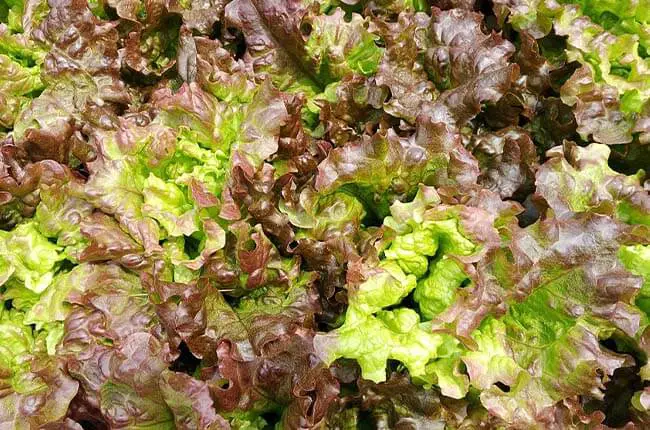
The leaves of the Batavian lettuce grow in a rosette pattern close to the ground.
Pic: The Batavian lettuce grow in a rosette shape close to the ground (Dwight Sipler from Stow, MA, USA, CC BY 2.0, via Wikimedia Commons)
The Iceberg lettuce has round tightly packed pale-green leaves.
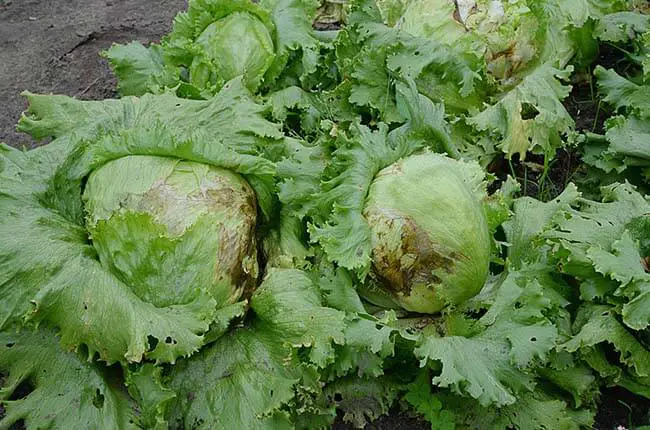
The Romaine varieties have long, sturdy leaves that are usually deep green at the outer edges and lighter green or white near the central vein.
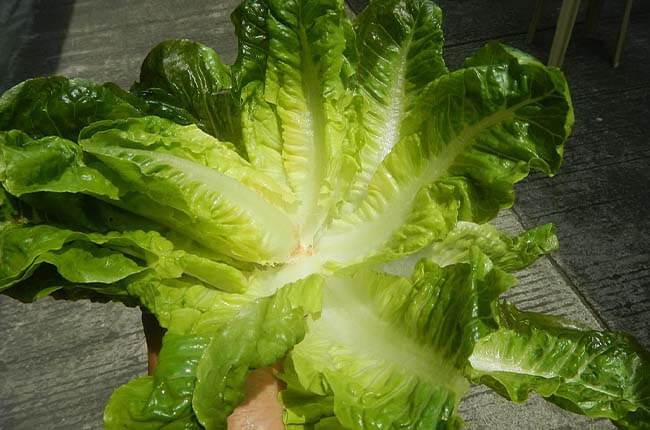
Plant size
Most lettuce plants have a short stem and can grow to a mature size of about around 8-12 inches (20-30 cm) tall.
Some tall, upright varieties like the romaine can even reach up to 20 inches (50 cm) under optimal conditions, though this is less common.
Flowers
Lettuce plants flower if they are not harvested, a tall flower stalk emerges from the center of the plant with small and yellow flowers.
It is worth noting that most lettuce are annuals or biennials, meaning they complete their life cycle in one or two years.
The lettuce plant and most of the lookalike plants are from the same Aster family (Asteraceae), thus sharing similar characteristics.
1. Wild Lettuce (Lactuca virosa)
Both the Wild Lettuce and the common lettuce come from the same Lactuca genus. The two may look quite similar especially when they are young as they both have long leaves with a central vein and the leaves grow in a rosette form at the base of the plant.
But, the Wild Lettuce is a taller plant that can reach up to 2-4 feet (60-120 cm). Its leaves are also more elongated and have prickly hairs especially on the underside, unlike the smooth or frilly lettuce leaves.
It is an edible plant but is very bitter due to its milky sap.

2. Skunk cabbage (Symplocarpus foetidus)
Skunk cabbage, also known as “swamp cabbage”, or “meadow cabbage” grows in the wetlands of eastern North America.
What sets it apart from lettuce is that it produces skunk-like floral odors to attract pollinators.
Other than that, this low-growing perennial plant can look quite similar to lettuce, especially with its smooth and large green leaves that can measure 16-22 inches (40-55 cm) long and 12-16 inches (30-40cm) wide.
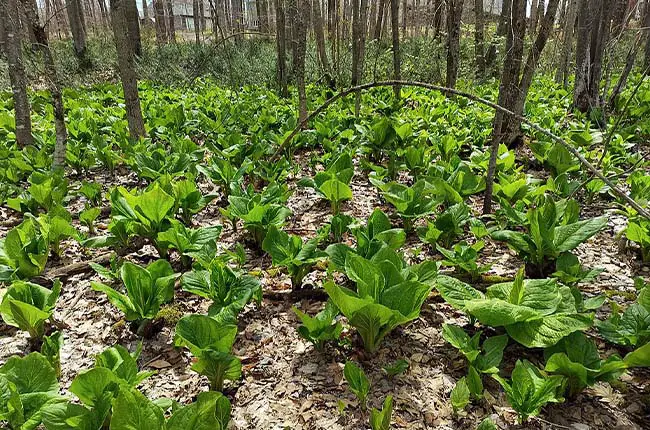
3. Prickly Lettuce (Lactuca serriola)
The “wild lettuce” (Lactuca serriola), also known as “prickly lettuce”, “compass plant” or “milk thistle”, is actually the ancestor of the lettuce plant (Lactuca sativa) we commonly eat today.
Prickly lettuce has a bitter milky sap and spiny undersides. It has with serrated leaves growing in a rosette shape. It can be eaten, especially when the leaves are young.
It differs from lettuce in that it can grow to an impressive 6.5 feet (2 meters) tall. It also has a rather unpleasant smell, and its leaves are prickly to the touch.
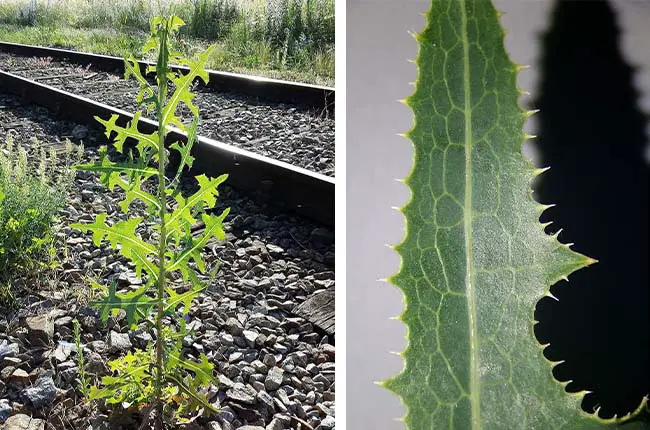
4. Plantain (Plantago)
The Plantain plant, from the Plantaginaceae family, can look quite similar to the Looseleaf Lettuce with broad leaves and round edges growing outwards in a rosette shape. Some also have a red hue.
The major difference is in the texture of the leaves. The leaves of the plantains are somewhat thick and leathery to touch, compared to the more delicate texture of lettuce leaves.
It is edible, and has thick stems that meet at a central point.
The leaf edges of the Plantain plant are also fairly smooth and more arrow-shaped than lettuce leaves.
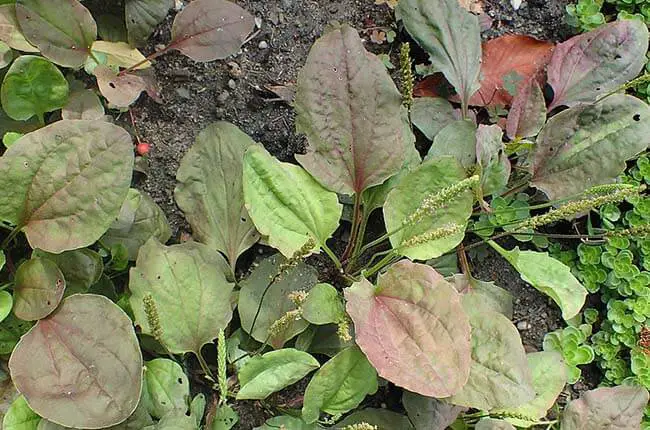
5. Tall Blue Lettuce (Lactuca Biennis)
Lactuca biennis, commonly known as tall blue lettuce or blue wood lettuce, is a species of Lactuca (lettuce) native to North America. Both the Tall Blue lettuce and the common lettuce we eat come from the same genus and share some characteristics of the leaves growing in a rosette close to the base of the plant.
The major difference is that the Tall Blue lettuce, as the name suggests, is a tall plant with a tall, stiff stem that can reach up to 2-7 feet.
Its leaves are also elongated and slightly toothed.
It is edible and is one of the favorites among those who like to forage plants in the wild, despite its bitter taste.
6. Common Mallow (Malva sylvestris)
The Common Mallow has soft, round leaves that may look like lettuce to the untrained eye, especially when they are young.
It usually grows in a low clump or rosette, similar to some types of lettuce. And both have a noticeable vein pattern with a central vein extending from the base to the tip of the leaf.
However, Mallow leaves are arranged on rather long stems that can measure up to 1-3 feet (30-90 cm) while the lettuce stem is short.
Also, the Mallow leaves are covered in hairs and have crinkled or scalloped edges, which is very different from the smooth or wavy edges of lettuce leaves.
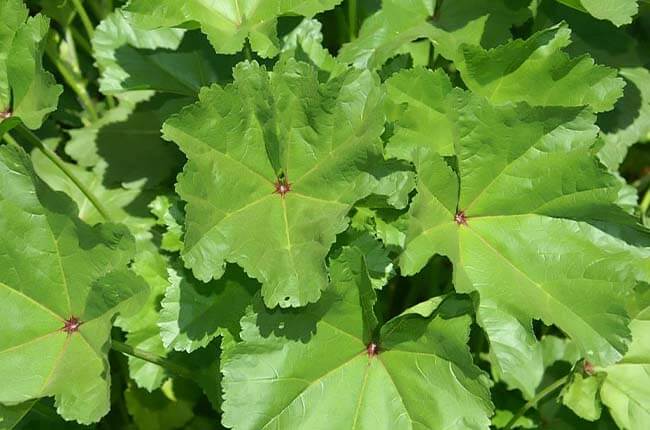
7. Thistle (Cirsium)
The most obvious difference between lettuce plants and thistles is that lettuce leaves are generally soft and smooth with a more rounded shape, while the leaves of thistles are prickly to touch and are typically elongated with a more lobed, toothed, or spiny edges.
Lettuce plants have a short stem and form a rosette of leaves close to the ground. Thistles, on the other hand, can grow quite tall (some species up to 6 feet or more) with a pronounced stem that supports the flower heads.
The flowers of thistles are usually pink or purple and form a round, spiky flower head that can be quite large and showy. Lettuce flowers, by contrast, are smaller, yellow or white, and are much less conspicuous.
Many types of thistle, particularly the spiny ones, are not typically consumed due to their prickly nature. However, some species of thistles are used in traditional medicine or as food in certain cultures.

8. Chicory (Cichorium intybus)
Both the lettuce plants and chicory produce leaves that grow in a rosette pattern, which means the leaves radiate out from a central point close to the ground.
But their leaf shape is quite different. The leaves of chicory are elongated with a more ragged appearance and deep indentations and pointed tips.
Chicory is known for its bright blue flowers that grow at the top of a tall, somewhat woody stem which can reach up to 3 to 4 feet tall. On the other hand, lettuce plants produce smaller, less conspicuous yellow to white flowers on soft stems.
Chicory plants are generally larger and taller than lettuce plants when fully grown.
Although both the lettuce plant and chicory belong to the Asteraceae family, chicory is a perennial plant.
The leaves of Chicory are elongated with deep indentations.
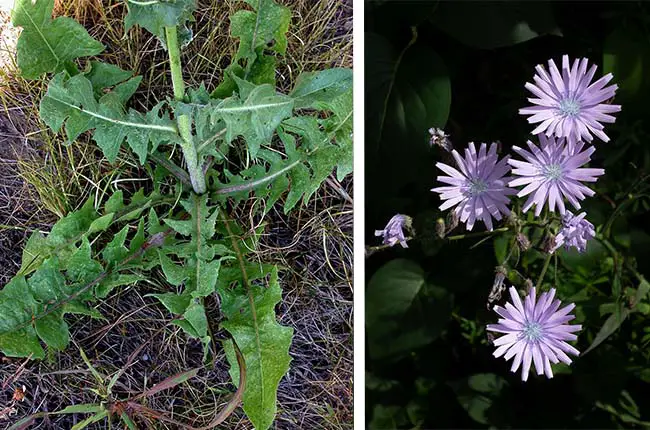
9. Curly Dock (Rumex crispus)
Curly Dock is from the Polygonaceae family with smooth green leaves and curly edges like lettuce leaves. The difference is that their leaves are more elongated and shaped like a lance.
As a perennial plant, it can be distinguished from lettuce by its seed pods, which often stay on the dead stalk until the following spring. The stems also tend to have a more intense red hue (though some lettuce varieties can be red too).
Its leaves, and in fact the entire plant, are edible without milky sap, although young leaves may taste a bit numbing.
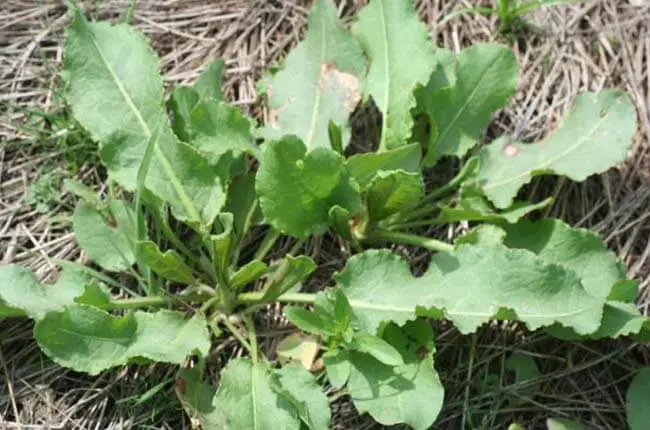
(Henry Brisse (upload by user:Abalg), CC BY-SA 3.0, via Wikimedia Commons)
10. Lamb’s Quarters (Chenopodium album)
This fast-growing annual weed look quite different from lettuce with its diamond-shaped leaves which can be 1- 2.8 inches (3-7 cm) long and its plant size that normally reach up to 59 inches (150cm) tall.
But since it is a very invasive weed, it can easily crop up in any garden space and can easily be mistaken as baby lettuce when they are still in the seedling stage.
Fortunately, the leaves and young shoots can be eaten raw or cooked, just like lettuce.
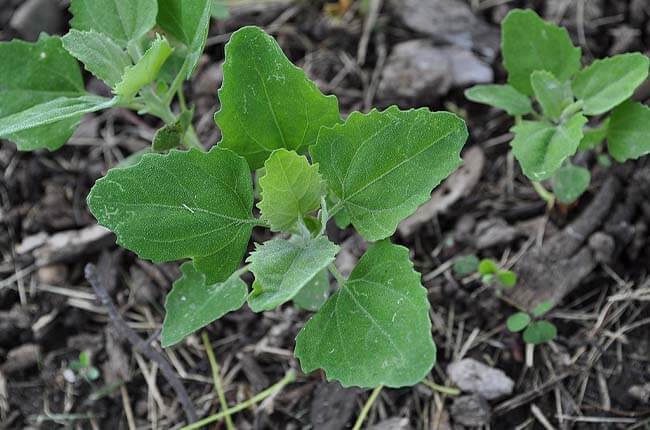
(NY State IPM Program at Cornell University from New York, USA, CC BY 2.0via Wikimedia Commons)
11. Milkweed (Asclepias syriaca)
Experienced gardeners aren’t likely to mix the Milkweed with lettuce because of its thick, lance-shaped and almost rubbery-textured leaves, unlike the delicate lettuce leaves.
Milkweeds also have tall, thick stem that can reach up to 6 feet (1.8 meter) and can exude a milky sap when broken.
Young milkweed plants can be eaten but should not be eaten in large quantities or when prepared incorrectly because it contains a toxic milky sap.
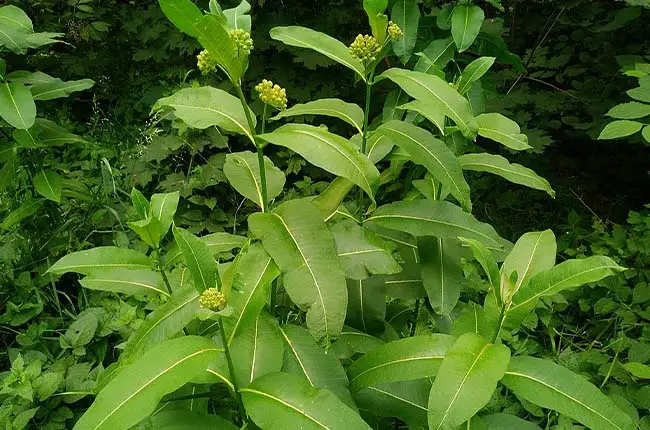
(Ruslan Kastani, CC BY-SA 4.0, via Wikimedia Commons)
How to distinguish between real lettuce and lookalikes?
Lettuce leaves are smooth, broad, and generally round in shape with lobed or frilly edges and no hair, rather than serrated, lance-shaped, or arrow-shaped. Lettuce leaves also have a delicate texture, while many lookalikes have a prickly or rough texture.
Also, most lettuces only grow a few inches tall, whereas some of the lookalikes on this list will reach several feet.
The smell of the plant may give you a hint, as the lookalikes can have an unpleasant odor, whereas lettuce should have very little smell.
If you are still unsure, let the plant flower which would give out the easiest clue as many lettuces produce small yellow flowers on a stalk, while the lookalikes produce flowers of different colors.
Happy gardening!
Related
Arugula vs. Weed Lookalikes: A Visual Guide
Top 10 Weeds That Deceive as Carrot Tops (Pictures)
Squash or Weed? Spotting 11 Look-alikes
- Top 6 Drip Irrigation Systems for Raised Beds (2025) - January 31, 2025
- Top 10 Orchid Fertilizers: A Comprehensive Review (2025) - January 16, 2025
- Top 6 Slow-Release Fertilizers for Houseplants & Veggies (2025) - January 15, 2025
